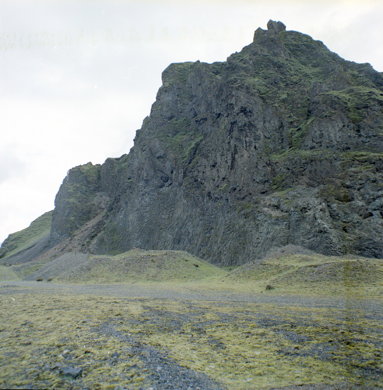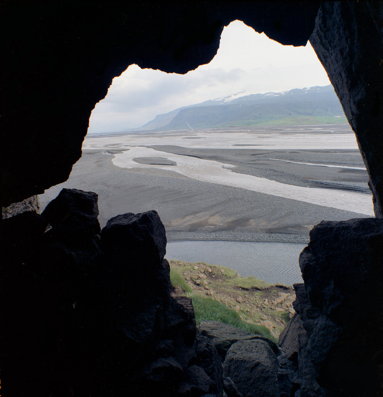
|
|
My 1969 traveling companion Ray Hoobler and Stóra Dímon (big image, small). |



|
|
My 1969 traveling companion Ray Hoobler and Stóra Dímon (big image, small). |
There are a number of topics that I wanted to touch on but that don’t properly belong in any of the pages relating to our experiences on a particular date. They are:
Note: this page is incomplete, and many links need to be added.
When we were preparing to go to Iceland in Spring 2010, I told Mark, “Don’t think that you’re going there for the food: it’ll be very disappointing.” For my gustatory experience forty-one years earlier can hardly be called positive. It was lamb, lamb, and more lamb. Somehow, in the whole week and a half that we were in Iceland, I seem to have eaten practically no fish at all, and certainly no other mammal than sheep. I had told Mark early in our association one of the most striking aspects of the Icelandic table in 1969: at lunch and dinner, there was always a small pitcher filled with rendered lamb fat, for pouring over your potatoes or whatever else you might think needed some lubrication. Indeed, when we were touring the North-west, our guide Áki once said, at dinner, to the three of us, “Don’t you want any fat?”
So I expected Icelandic cuisine to be dull, uninspired, and even occasionally repellent. How mistaken I was! As you may have seen in the dated pages here, we had three memorable meals that have to considered pinnacles of eating pleasure: the Langoustine luncheon in Höfn, our second dinner at the hotel in Seyðisfjörður, and the tasting menu at Fiskmarkaðurinn (The Fish Market) in Reykjavík on the last night we spent in Iceland. Those were the tops, but I think we can say truthfully that we never had a bad, dull, or disappointing meal during the tour. And we never saw a single pitcher of lamb fat.
It started early, in the very typical way of getting interested in Norse mythology from a book I read in elementary school. But there was the linguistic aspect, too: I’ve always been interested in the variation among languages, and especially how the Indo-European languages are related to each other. And all the books say that if you want to understand the total picture, Icelandic, with its relatively transparent structure, furnishes an excellent window.
So when I was in graduate school, I took advantage of one of the best Icelandic collections in an American university, and started learning a new language. This was, much as anything, a way of avoiding what I should have been doing instead, namely studying mathematics.
But if you start reading a language, you do it by reading what’s written in it, and I learned one of the greatest secrets in literature. The sagas may be medieval, but to an amazing degree, they read modern. The language is direct, the concerns are totally secular, no concern for the other-wordly. The style shows no Latin or Greek influence, and is conversational rather than literary. The characters’ motivations are familiar: power, influence, jealousy, honor. It’s a foreign world, no doubt about it, but as you read, you feel you’ve known these people before.
Njál’s Saga has been translated many times into English. By far the best transation is the one done by Magnús Magnússon and Hermann Pálsson, and published by Penguin. Because Icelandic has loads of words that look like archaic English words, it’s almost impossible to resist the temptation to use those words in the translation. Instead, the Penguin gives the story in comfortable modern language.
The Wikipedia entry for the saga is completely misleading in one respect: it refers to the work as “Icelandic epic”. But epics are always in poetry, for one thing, and far as I know, use high-flown language. The sagas, on the other hand, are prose, prosy, prosaic, and the language is direct and simple.
The sagas take place in the “heroic period” between 930 and 1030 for the most part, but were written at least 200 years after the latter date. There’s continuing debate about whether they’re total fiction, historical fiction about real people and dimly-remembered real events, or reliable history. The word “saga” just means a thing said or spoken, and people had the notion that the sagas were oral history. But the best of them are so carefully constructed that it’s very hard to see the best of them as anything but the work of a writer working through the long winter nights to put together a tight story.
The sagas give a very clear impression of the landscape. And if you've read the stories, there will be a strong desire to see the terrain where they took place. So I had an interest in visiting Iceland for quite a while before I actually got there in 1969. Most of the sagas take place in the Northwest, when the action is not at Þingvellir, but the greatest of them, Njál’s Saga, takes place in the south, near where we stopped at Hótel Rangá in Hella.
I was in Paris for academic year 1968-69, and I suppose I must have been discussing this with my colleague Ray Hoobler in the preceding summer. Somehow, we had realized that we both were interested in the sagas, and we made a tentative plan that I would fly westward from Europe at the end of the Spring term, and he and his wife Sophia fly eastward, to meet in Iceland for an adventure. The idea, naturally enough, was to go to as many of the saga sites as we could.
Ray reminds me that the rental office would not accept our American drivers’ licenses. The solution to this problem was to get Icelandic learners’ permits, a bureaucratic hurdle that was, in effect, one centimeter high, since it took only about ten minutes. And so we drove through the South as Icelandic learners.
I arrived in Reykjavík a day or two before them, as I recall, but as soon as we were together, we rented a VW Beetle and drove along the southern road—it was not yet completed as a ring-road—to try to see Bergþórshvoll, site of Njál’s homestead, and maybe Hlíðarendi, where Gunnar, the other hero of the saga, lived. We did see them, if you count signs along the road that didn’t seem to be related to anything that we could make out. We could have turned into some private-looking roads, but I don’t think that any one of us was willing to do that.
“Stór” is the ordinary Scandinavian word for big, and someone told us that “dímon” is not an Icelandic word at all, but Irish, meaning twin hill.
We did get to see Gullfoss, and on our drive we caught sight of an outcrop that looked interesting, which we later learned was called Stóra Dímon. I took some pictures of it, few of which I can get to look right: fading of color negatives, maybe my own lack of skill with Photoshop.

|
| Stóra Dímon on a cloudy day (big image, small). |

|
| The cave, looking out onto Markarfljót (big image, small). |
We drove up to the outcrop and climbed around it. You can see the typical columnar basalt in the picture at the top of this page, where Ray is perched on it. We evidently found a better route up towards the top, though, and found a little cave that I just had to get inside of so I could point the camera outwards.
It wasn’t till I looked up Stóra Dímon on the internet that I realized that it’s a little distance to the east of Hvollsvöllur, so we must have driven till we saw something enticing, climbed up (and into) the hill, and then headed back. We stayed overnight in a B&B somewhere around there. It was run by a very taciturn retired seaman, who unbent considerably when he found that we were in the area because of our interest in the sagas.
We drove back to Reykjavík and hooked up with a small tour, there were just the three of us and (I think) four Icelandic ladies who spoke no or little English, and the guide, Áki—I’ve forgotten his other names. The tour was to the Breiðafjörður area, and got as far as the town of Stykkishólmur. This is the general region where the Eyrbyggja Saga and the Laxdæla Saga take place. I recall little of our tour, beyond the fact that it was very rainy at times, and that this was the first time I walked on a beach with black sand. We saw puffins flying and nesting, something we didn’t catch on the 2010 tour, and I also have a black-and-white picture of an arctic tern from below, not so different at all from the pictures I got on the eighteenth.
Icelandic is classified, along with English and Dutch, in the Germanic branch of the Indo-European language family. It’s highly inflected, like Latin: rather more so in the noun-adjective system, much less so in the verb system, since there’s only a present and past tense that are formed directly on the verb-stem. (Any other tense you get with auxiliaries like had or was or will.) But if you want to learn the language, you have to know the declensions of the nouns, just as you did if you studied Latin.
The modern language makes heavy use of compounds, running two or more nouns together into one word without hyphens, the way German does. We say Rang River, they say Rangá—the last syllable is the one-letter word for river. In the case of Eyjafjallajökull, for instance, the components are eyja, fjalla, and jökull. The first two are the words for island and mountain, both put into the genitive plural, and the last part means glacier. The idea of the name, I think, is that Eyjafjöll are mountains from which you can see the Westman Islands, not far off the south coast, and Eyjafjallajökull is the glacier on or nearby those mountains.
Return to:
Return to the central Iceland page; to the central travel page; to my home page.